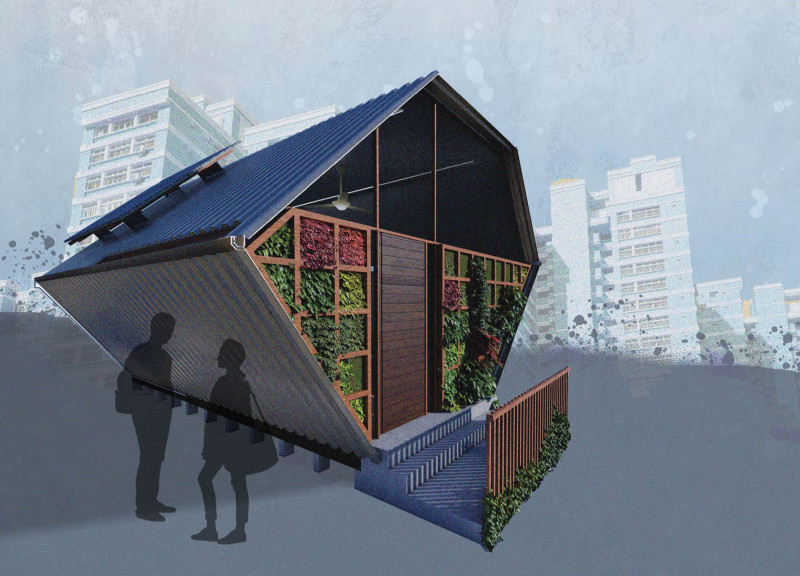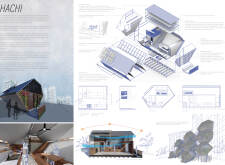5 key facts about this project
### Innovative Design Elements
HACHI distinguishes itself with several innovative design features. The use of recycled materials, such as shipping containers and reclaimed wood, demonstrates a commitment to sustainability by minimizing environmental impact. Polycarbonate windows are incorporated for their durability and light-transmitting qualities, which enhance the overall aesthetic while promoting energy efficiency. In addition to structural choices, the design prioritizes vertical farming with integrated gardens that improve air quality and foster biodiversity in the urban environment.
The architectural layout is adaptable, featuring multiple levels that encourage fluid movement between spaces. Open-plan configurations support natural light and promote airflow, essential for maintaining comfortable indoor environments. Furthermore, systems for water management, including septic tanks and rainwater harvesting mechanisms, reinforce the project’s ecological considerations, enabling residents to utilize resources efficiently.
### Environmental and Community Focus
The HACHI project encapsulates a dual focus on environmental sustainability and community engagement. The innovative inclusion of vertical gardens serves not only aesthetic functions but also practical roles in supporting urban agriculture and reducing pollution. The community-oriented design encourages social interaction, illustrated by communal spaces that facilitate gatherings and foster neighborhood relationships.
Another distinguishing feature is the modular construction approach, allowing for seamless assembly and adaptability. By enhancing the overall efficiency of the design and construction process, HACHI presents a model that can be replicated in other densely populated cities facing similar housing challenges.
### Integration of Technology and Nature
The interplay between technology and nature is a significant hallmark of the HACHI project. The incorporation of rooftop solar panels offers renewable energy solutions that align with sustainable living practices. Additionally, the integration of smart home features enhances the overall functionality of the residence, allowing occupants to monitor and optimize energy consumption.
The architectural design operates not only as a residence but as an educational tool, showcasing sustainable practices and modern living principles. By combining these elements, the project stands as a comprehensive model for urban architecture that prioritizes ecological balance, adaptability, and community-centric design.
To dive deeper into the project’s technical aspects, such as architectural plans, sections, and innovative design ideas, readers are encouraged to explore the full project presentation for comprehensive insights into HACHI and its architectural contributions.























